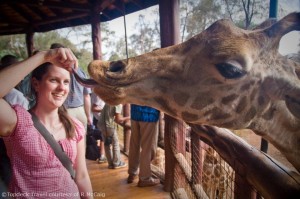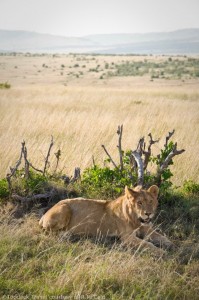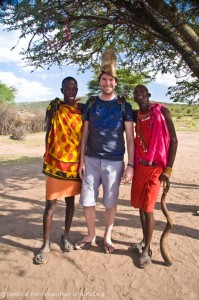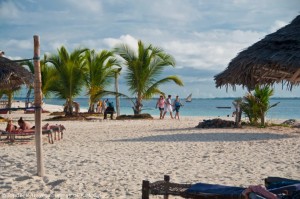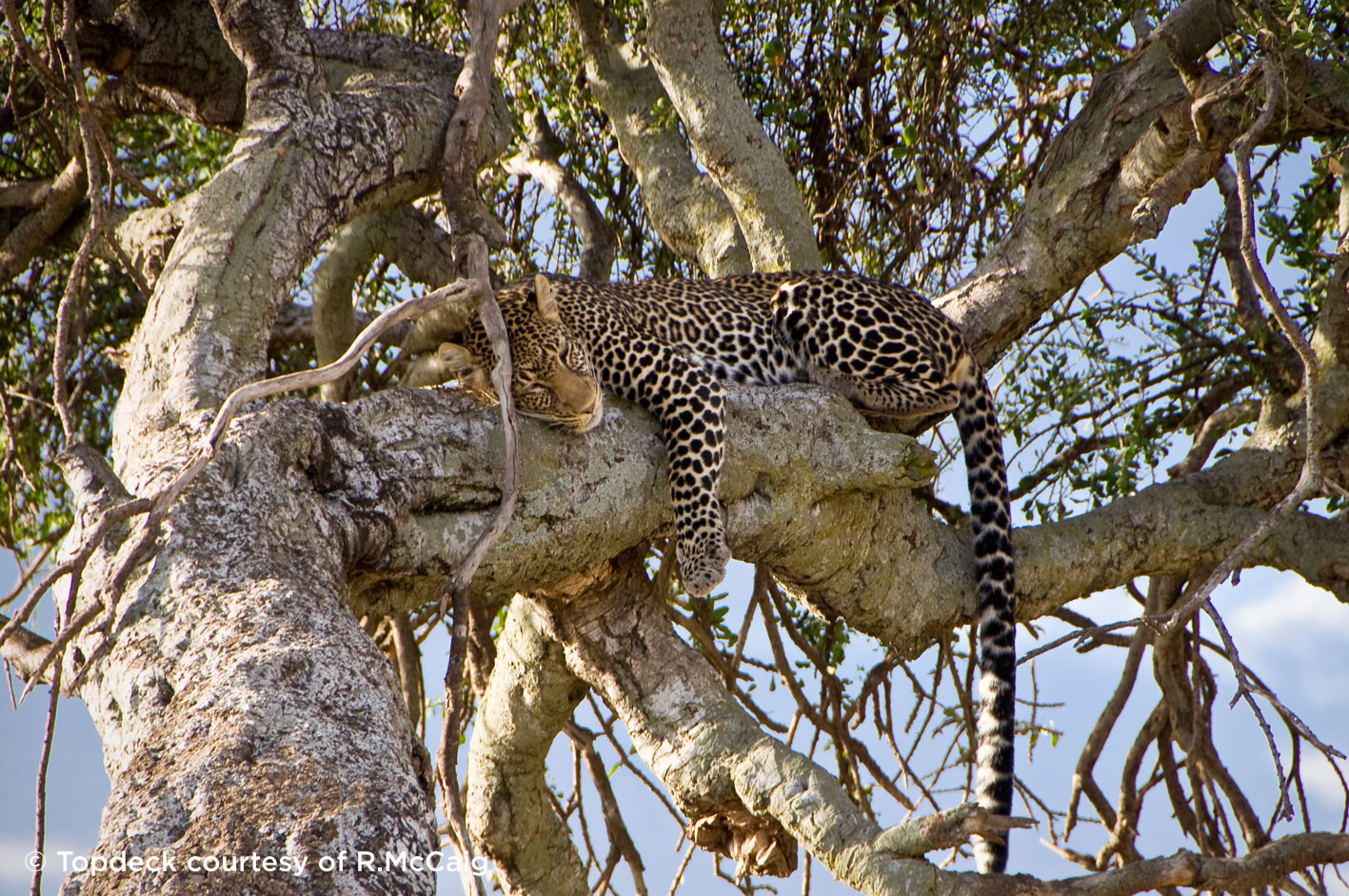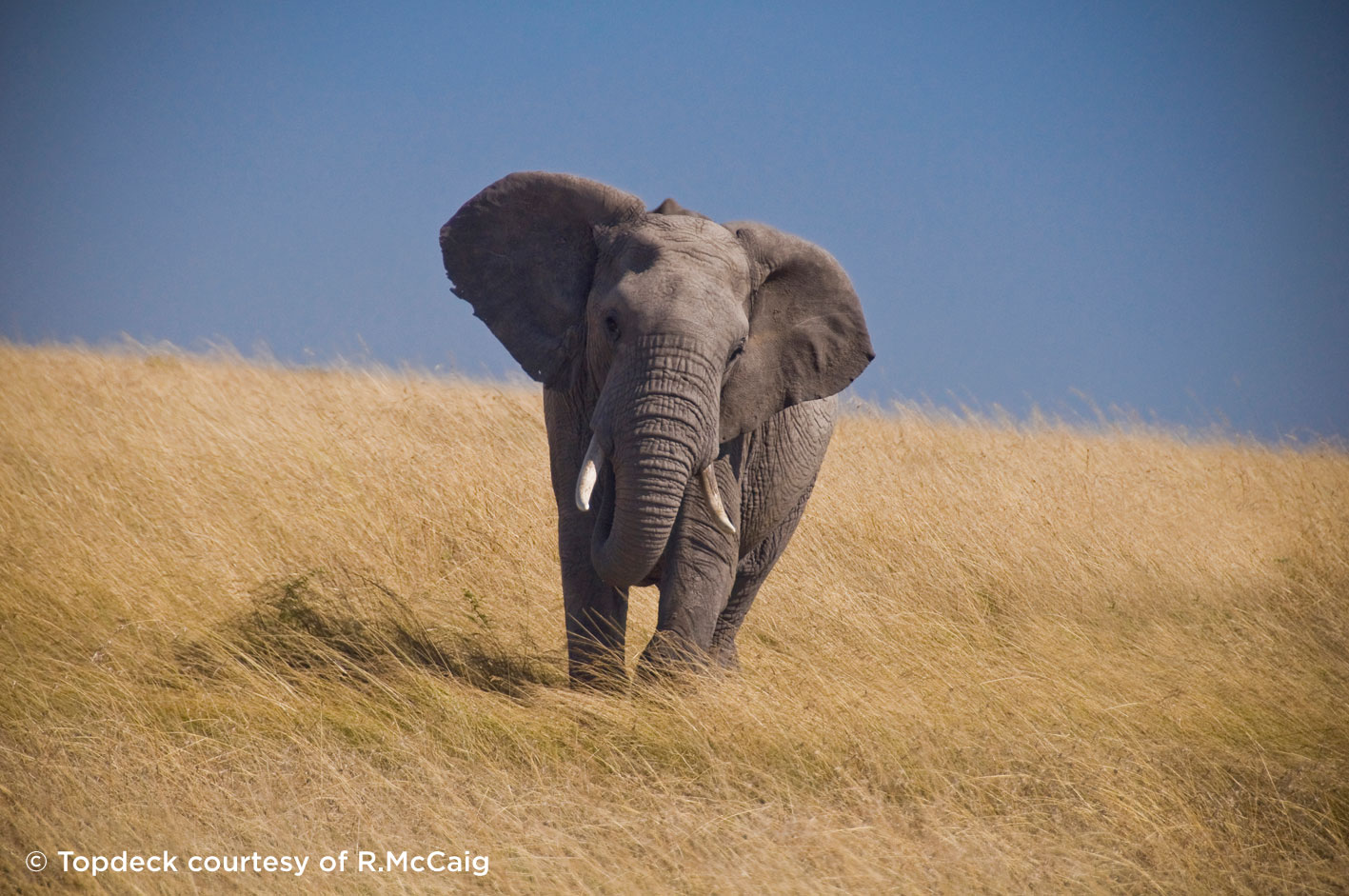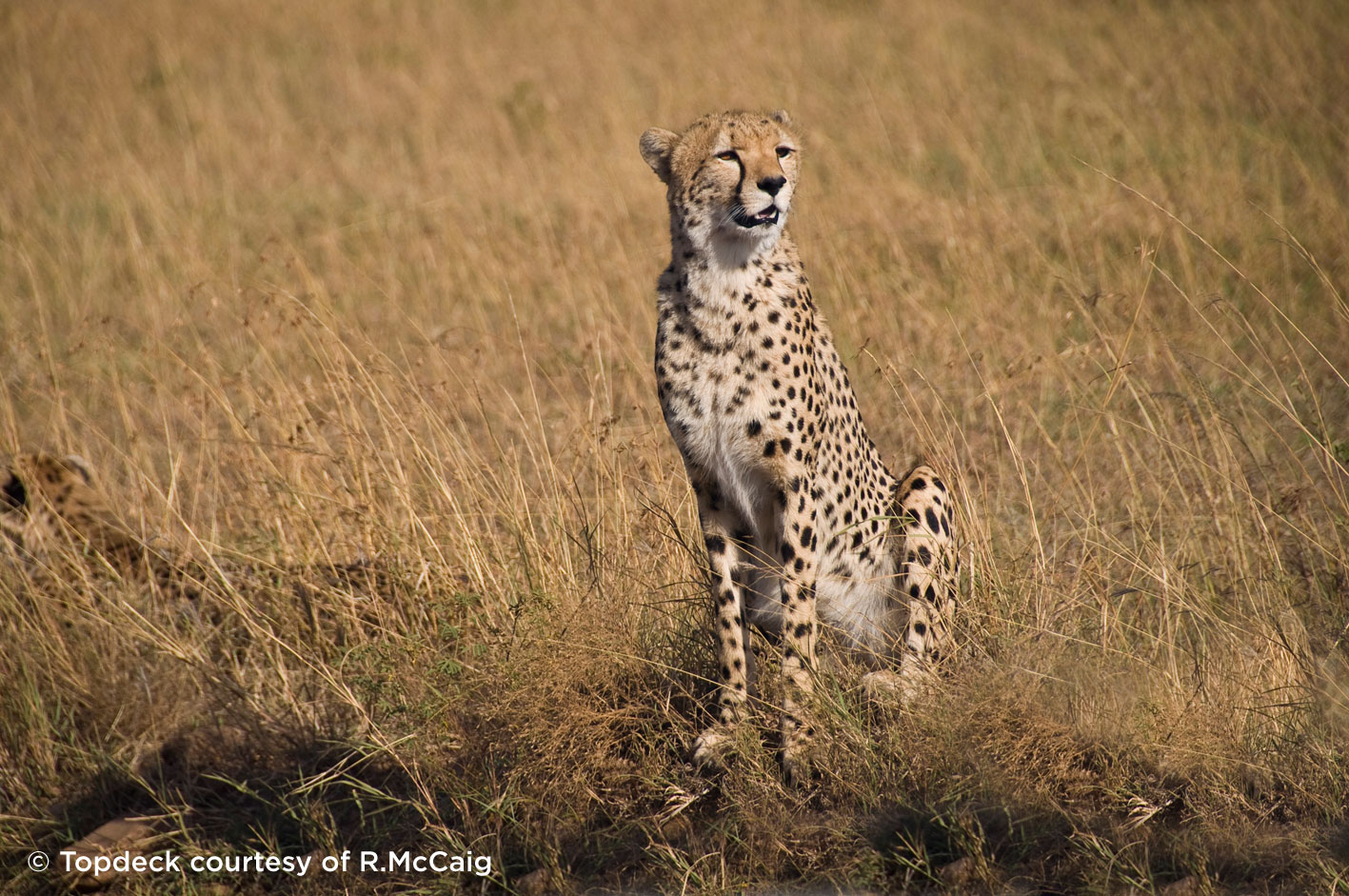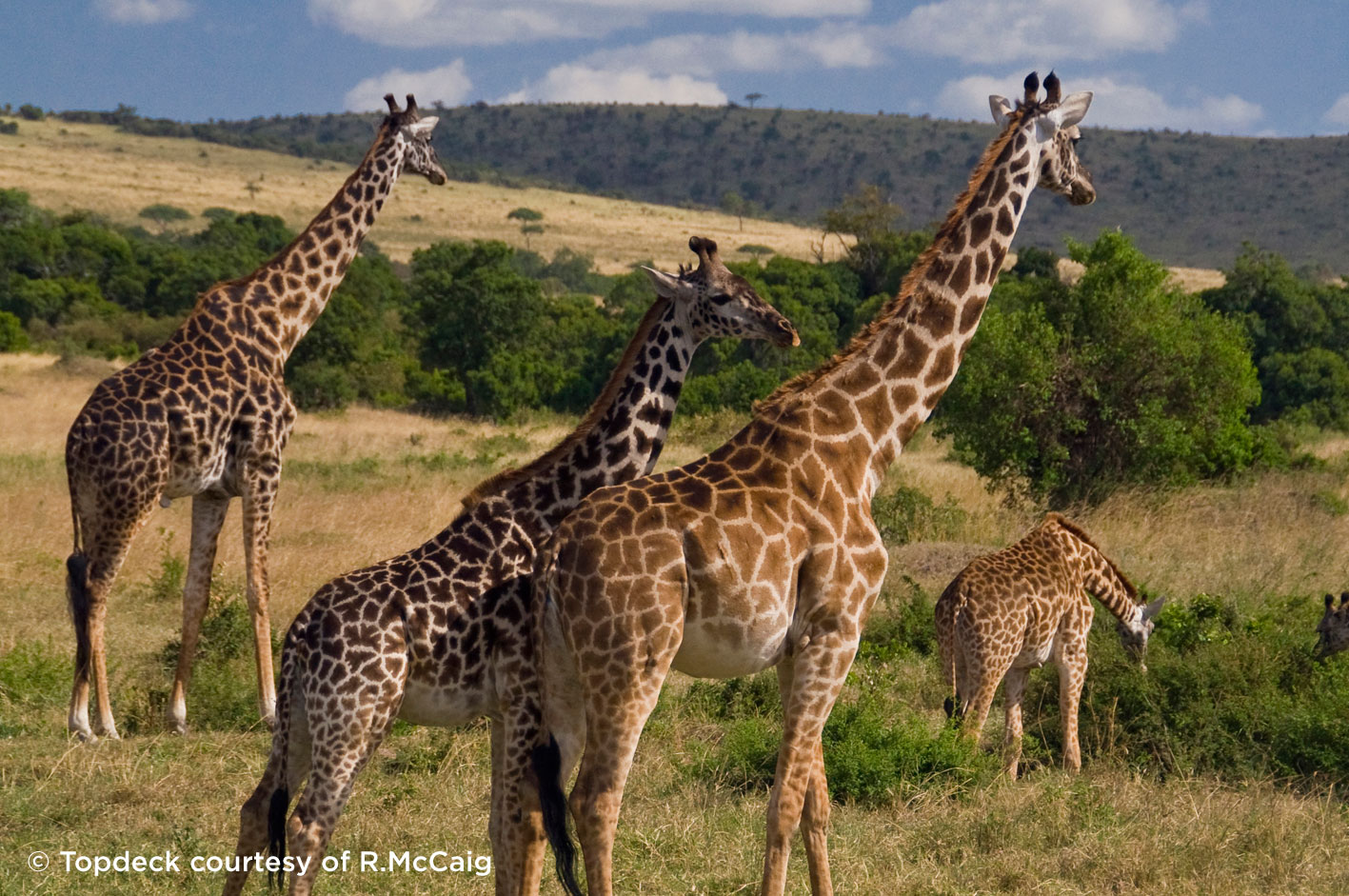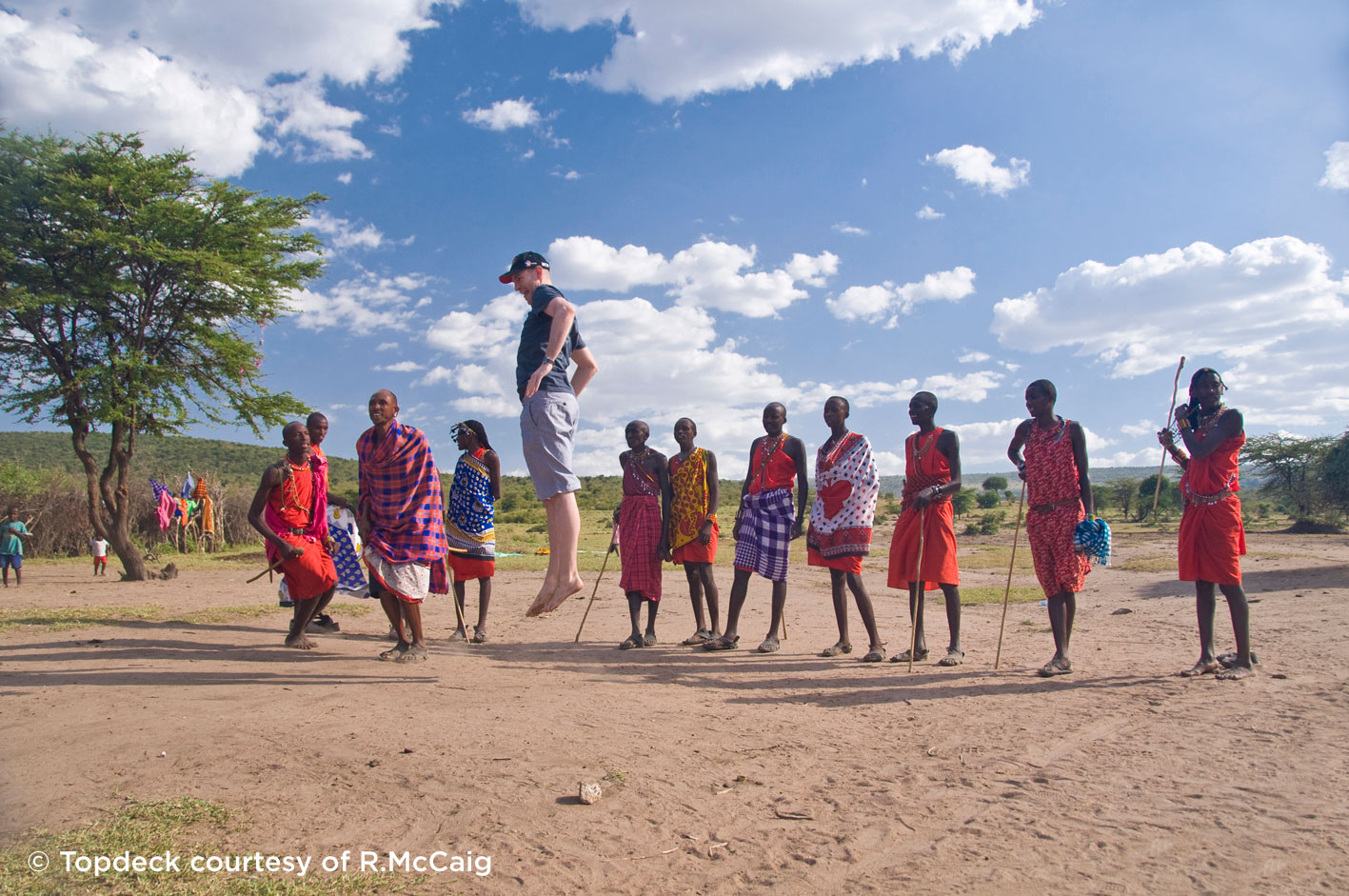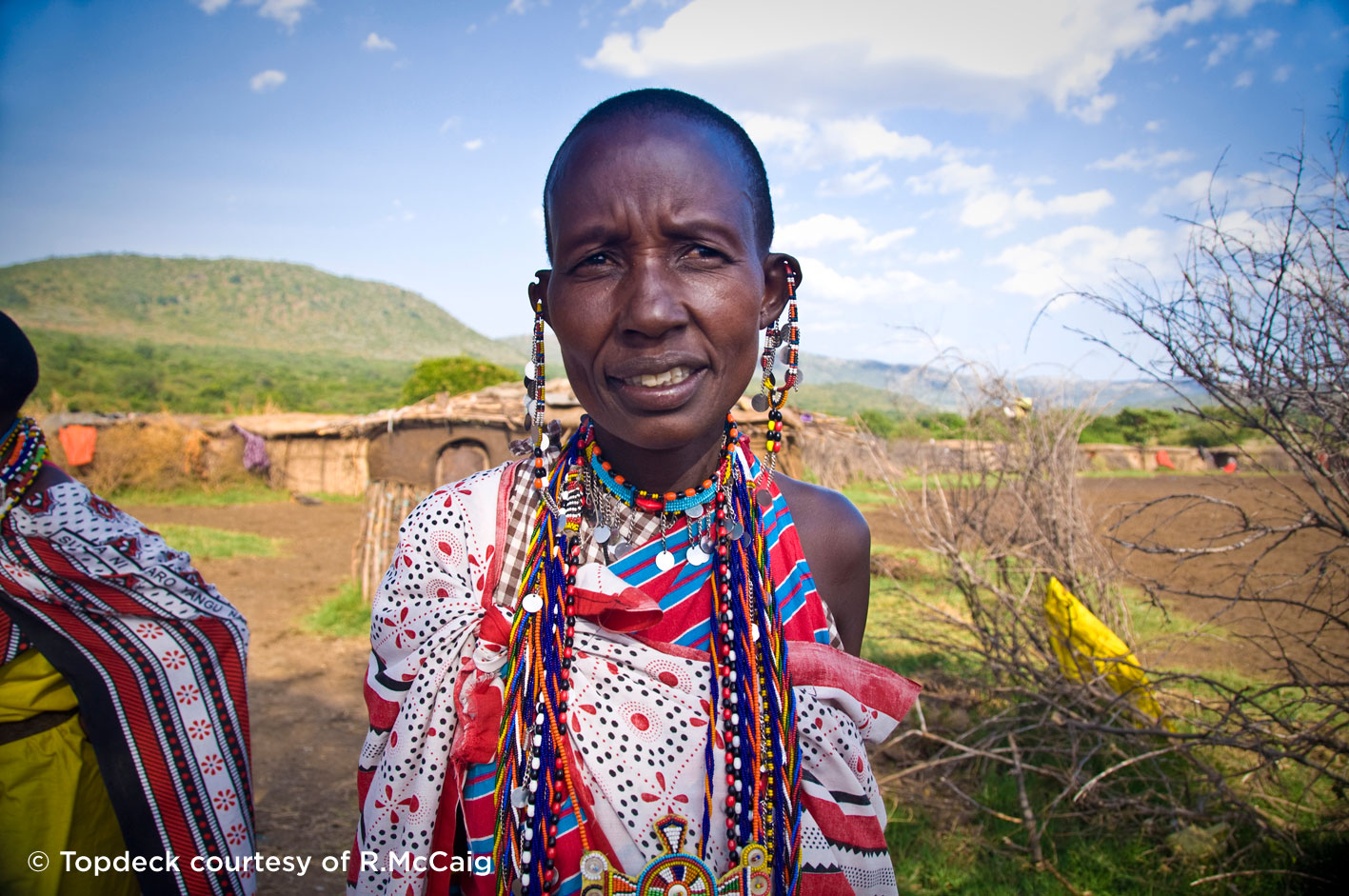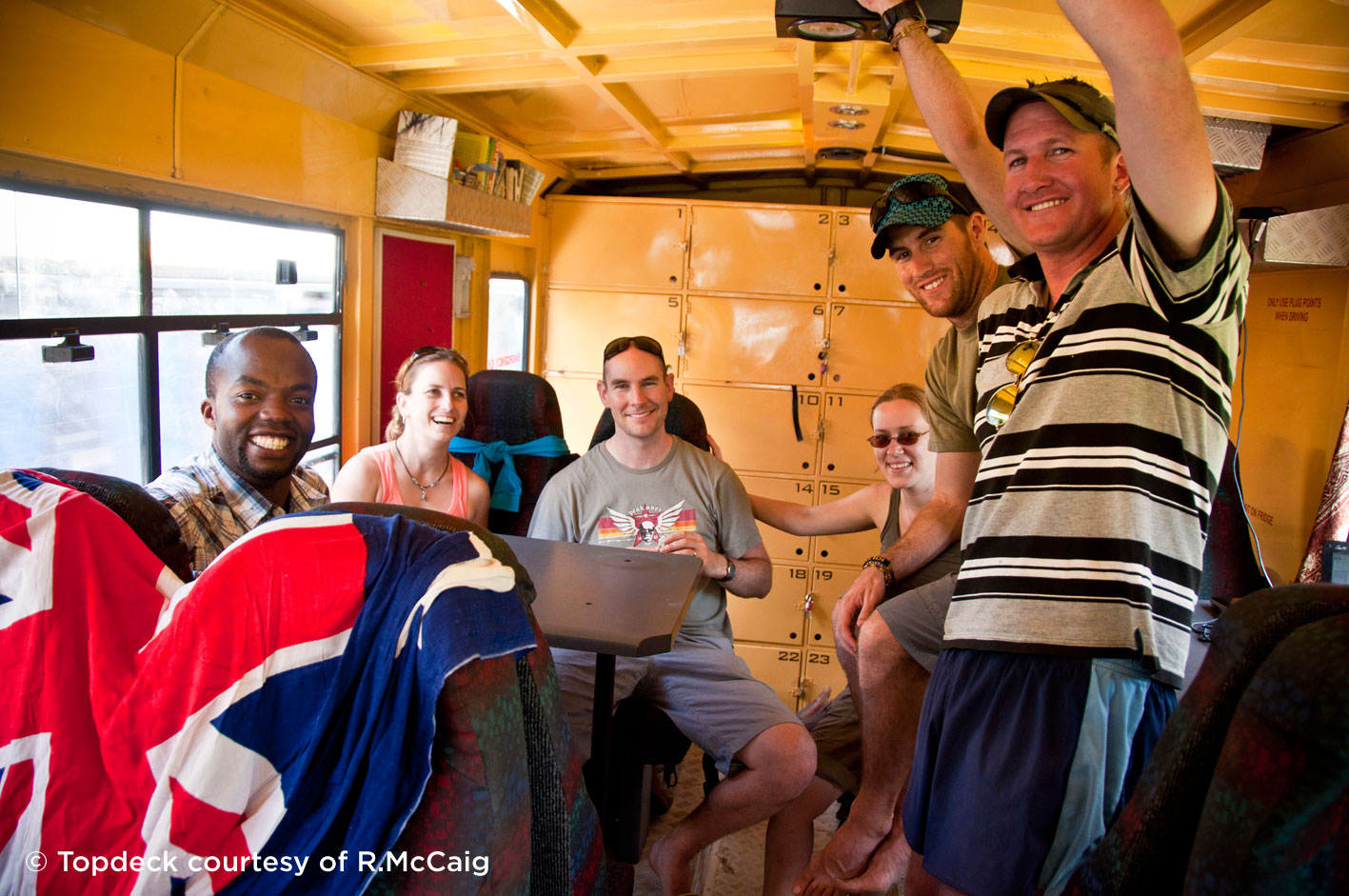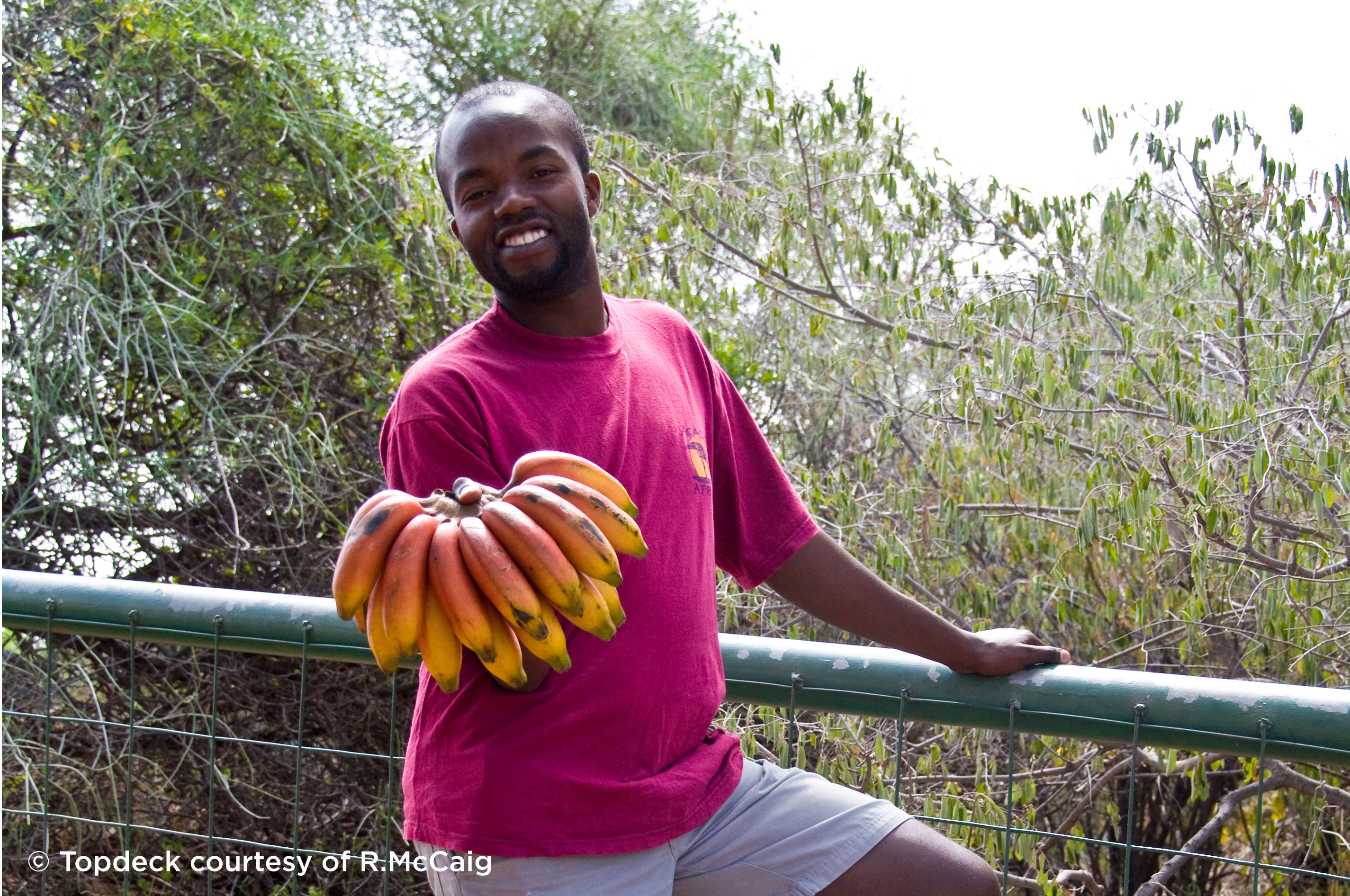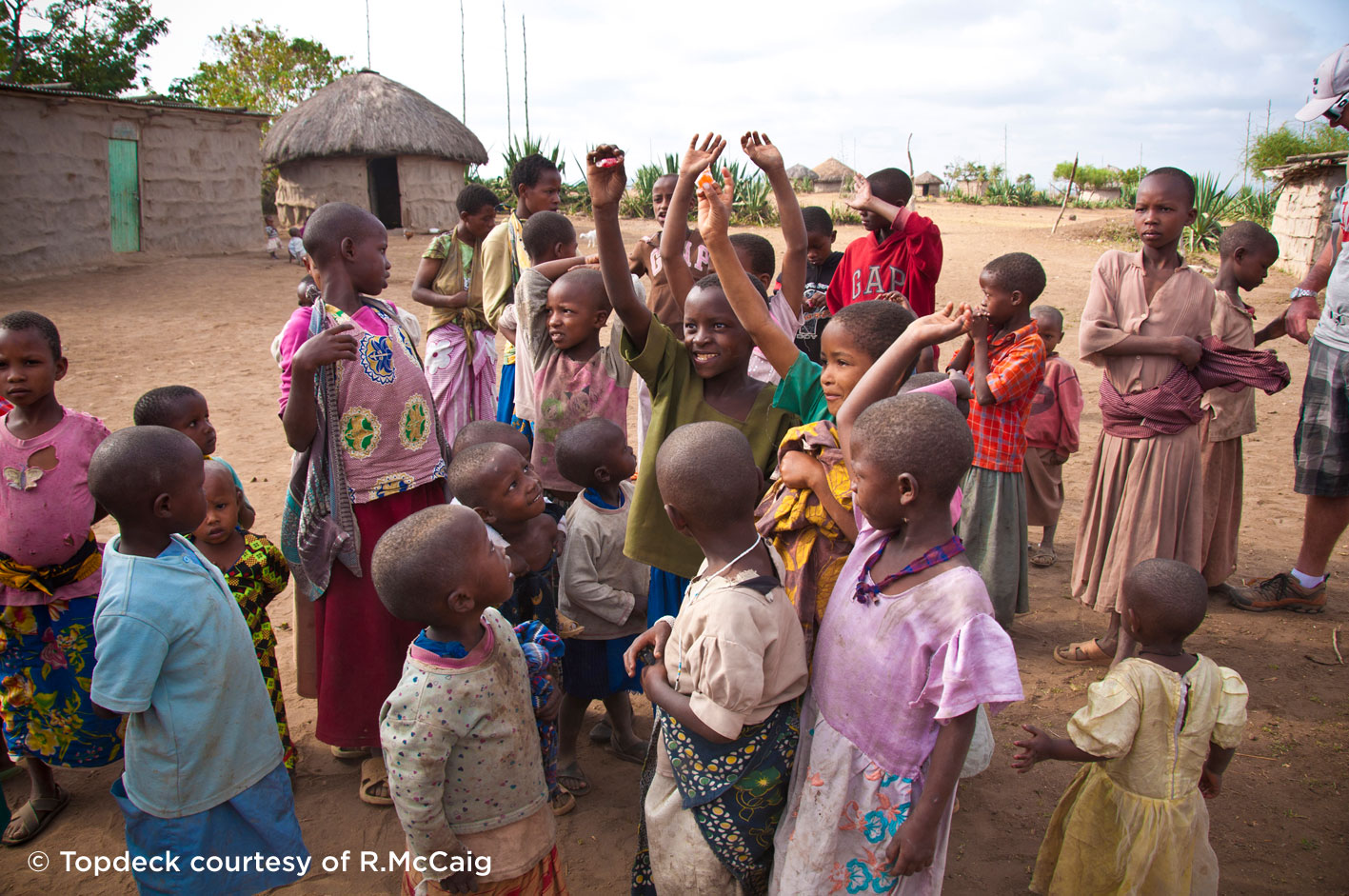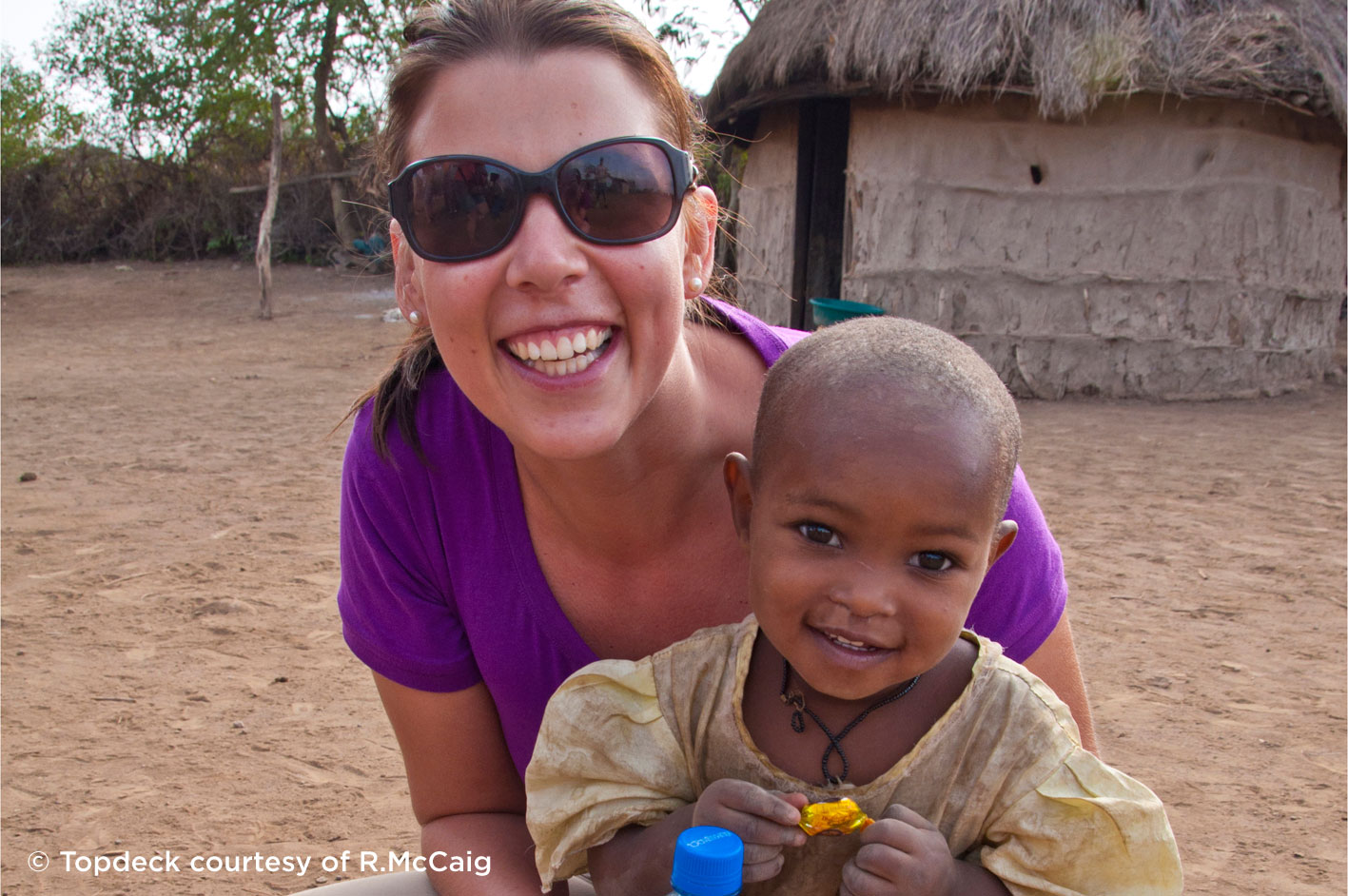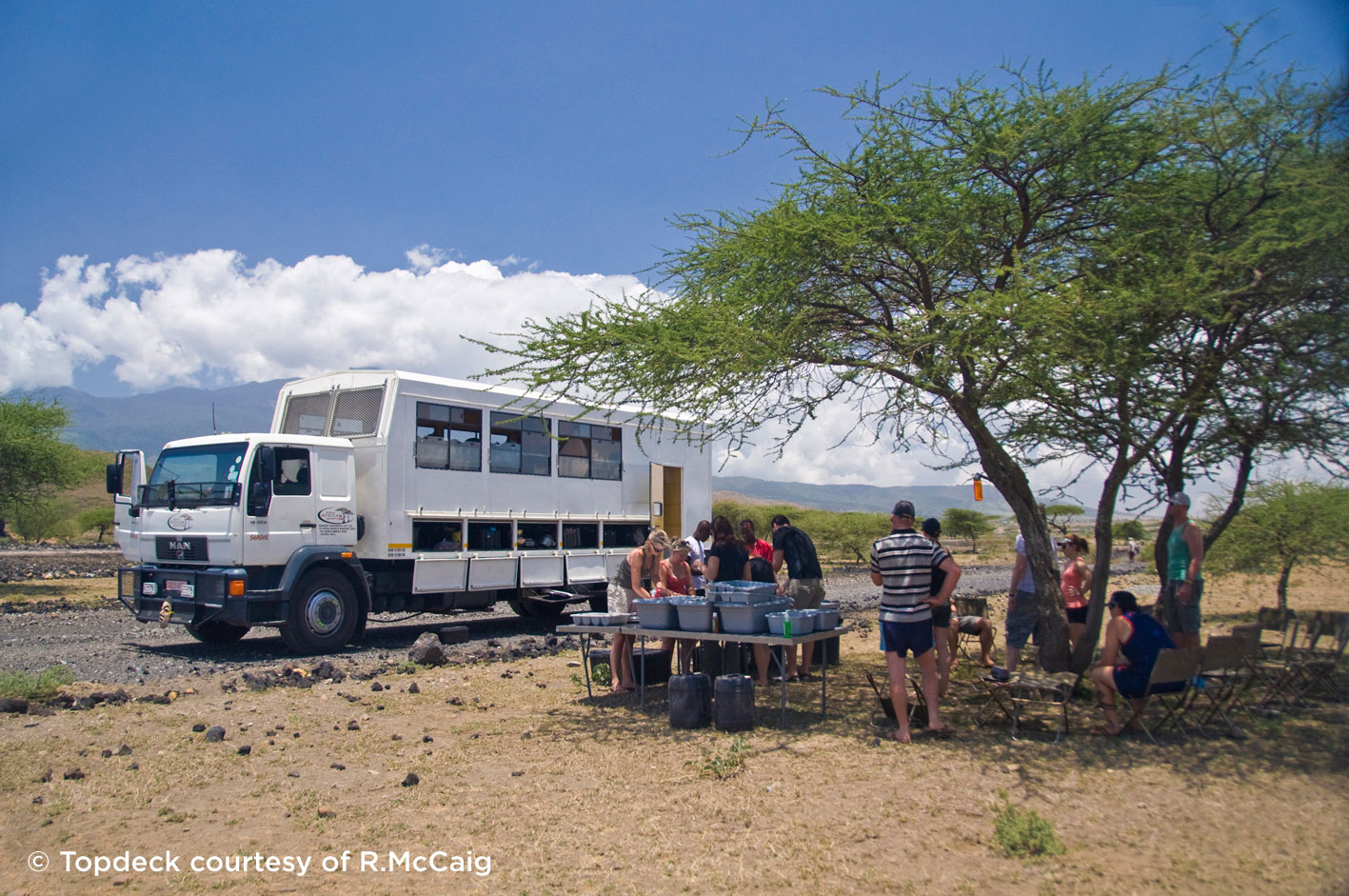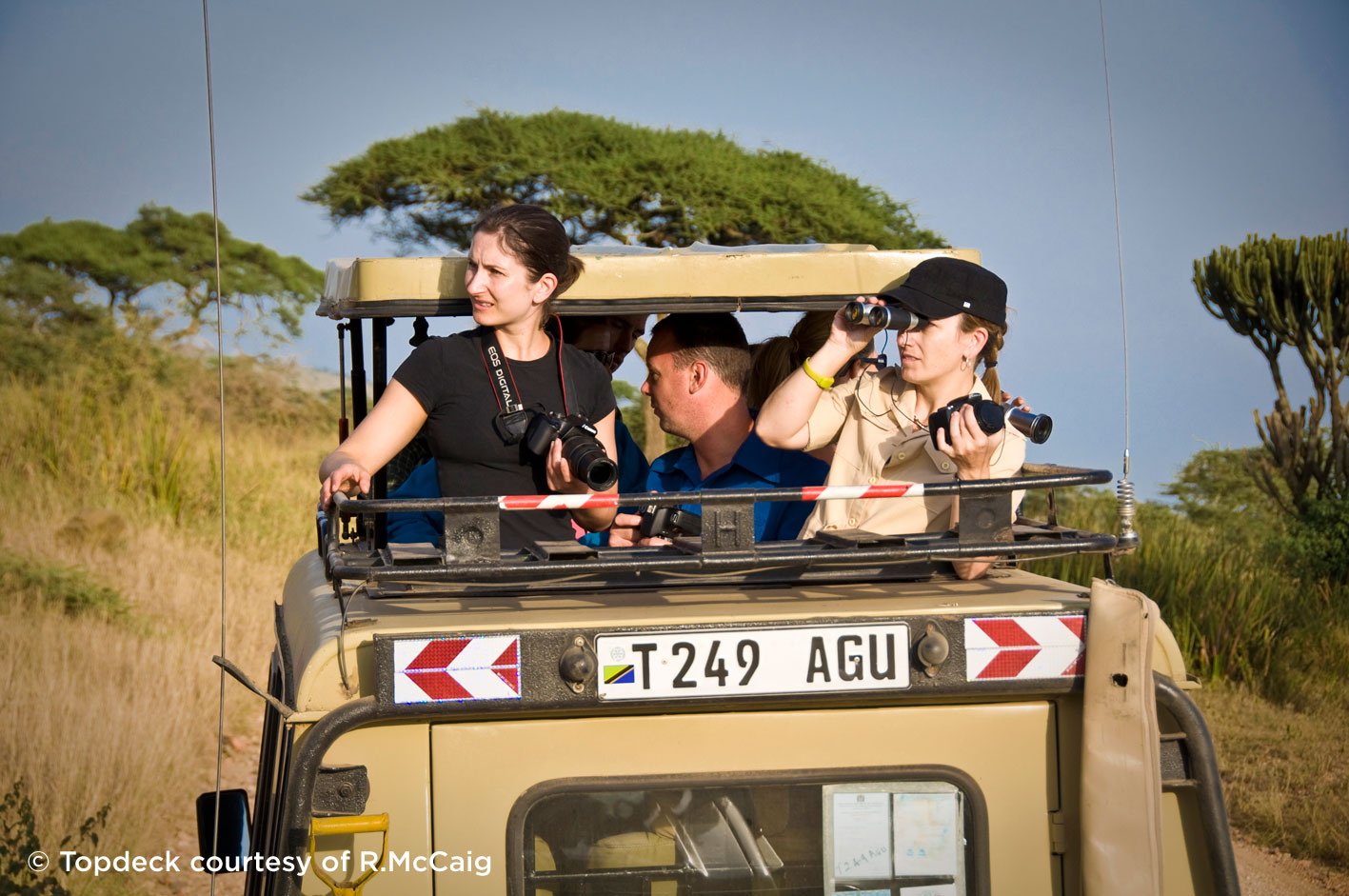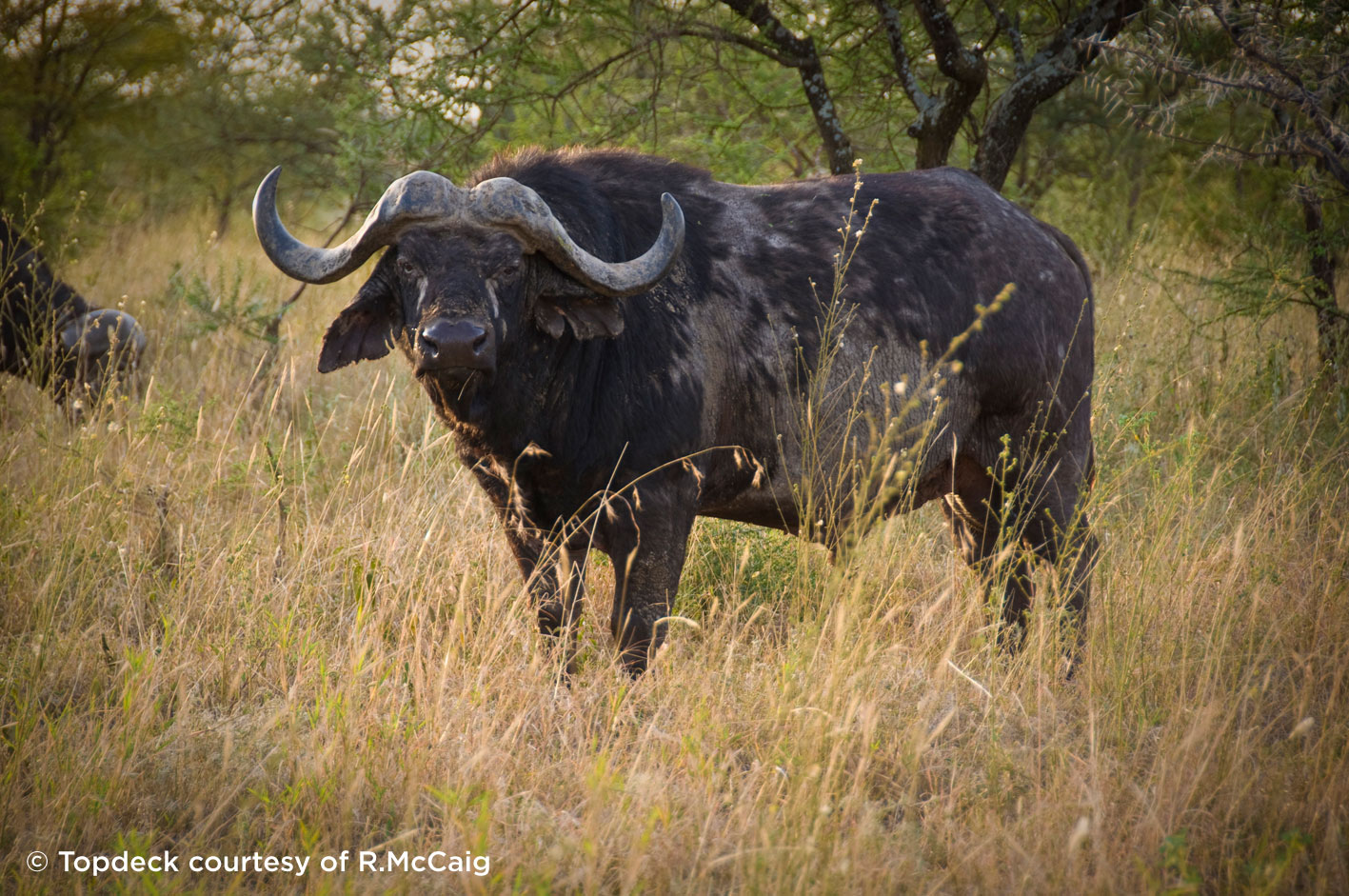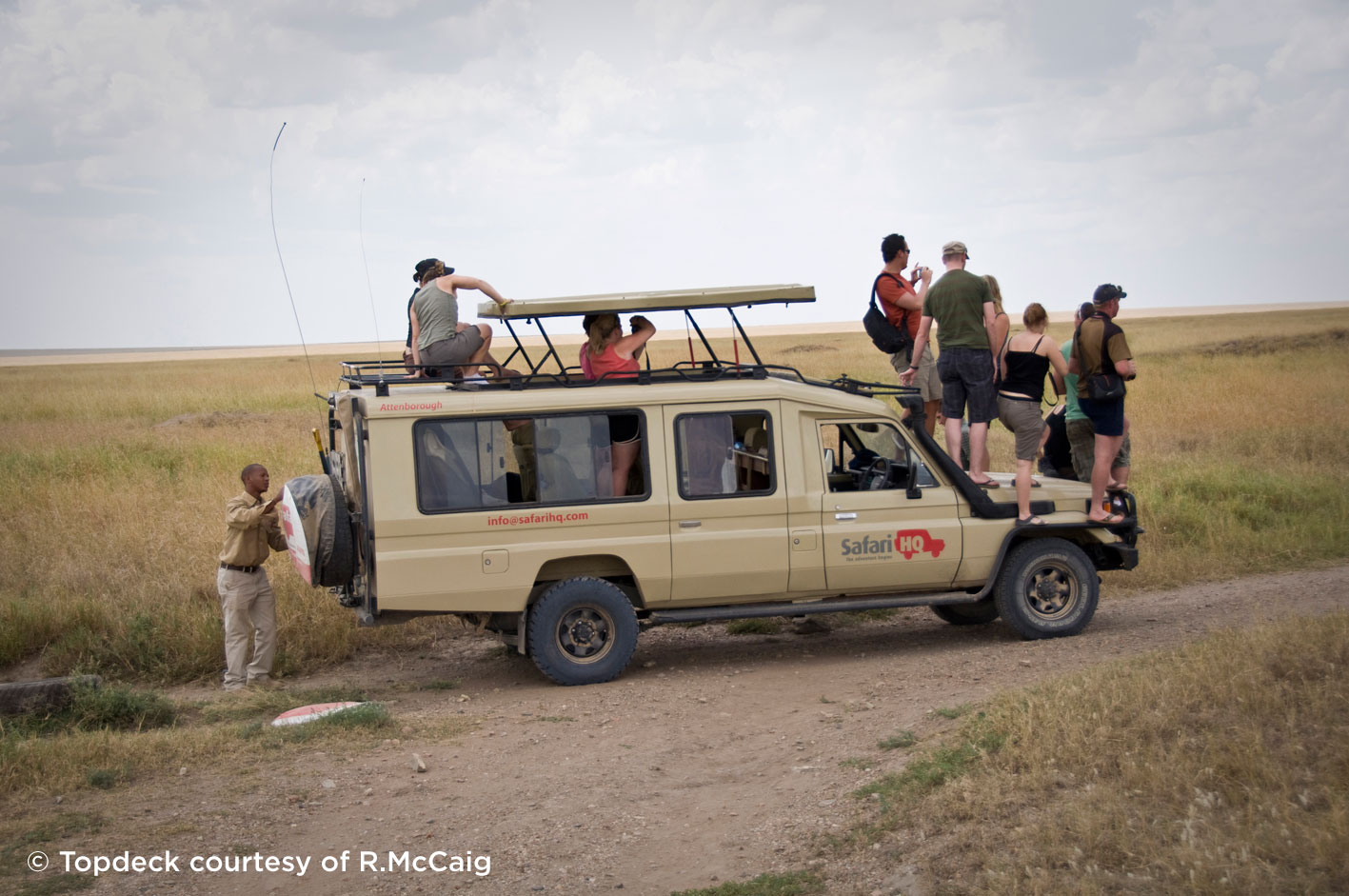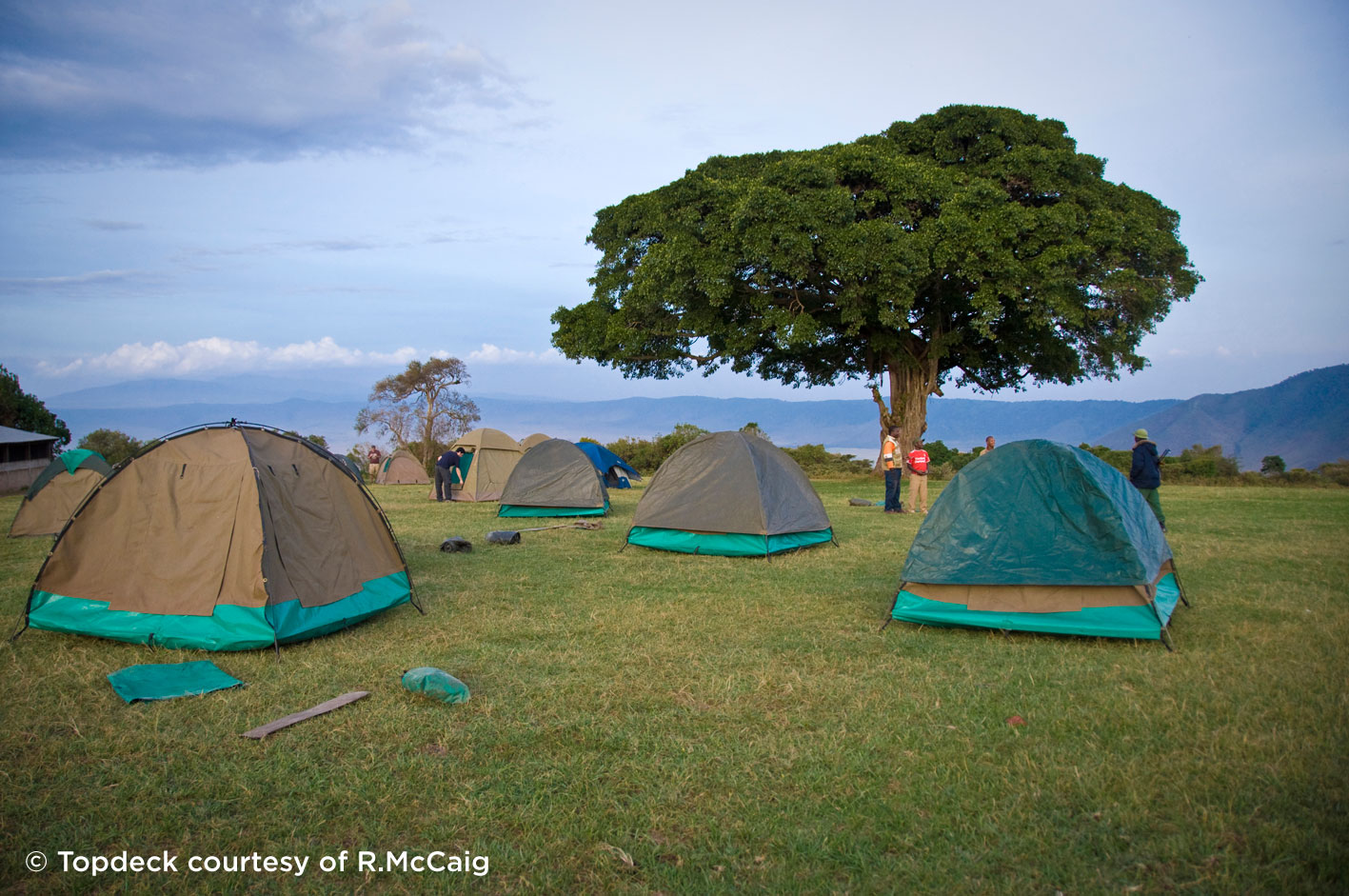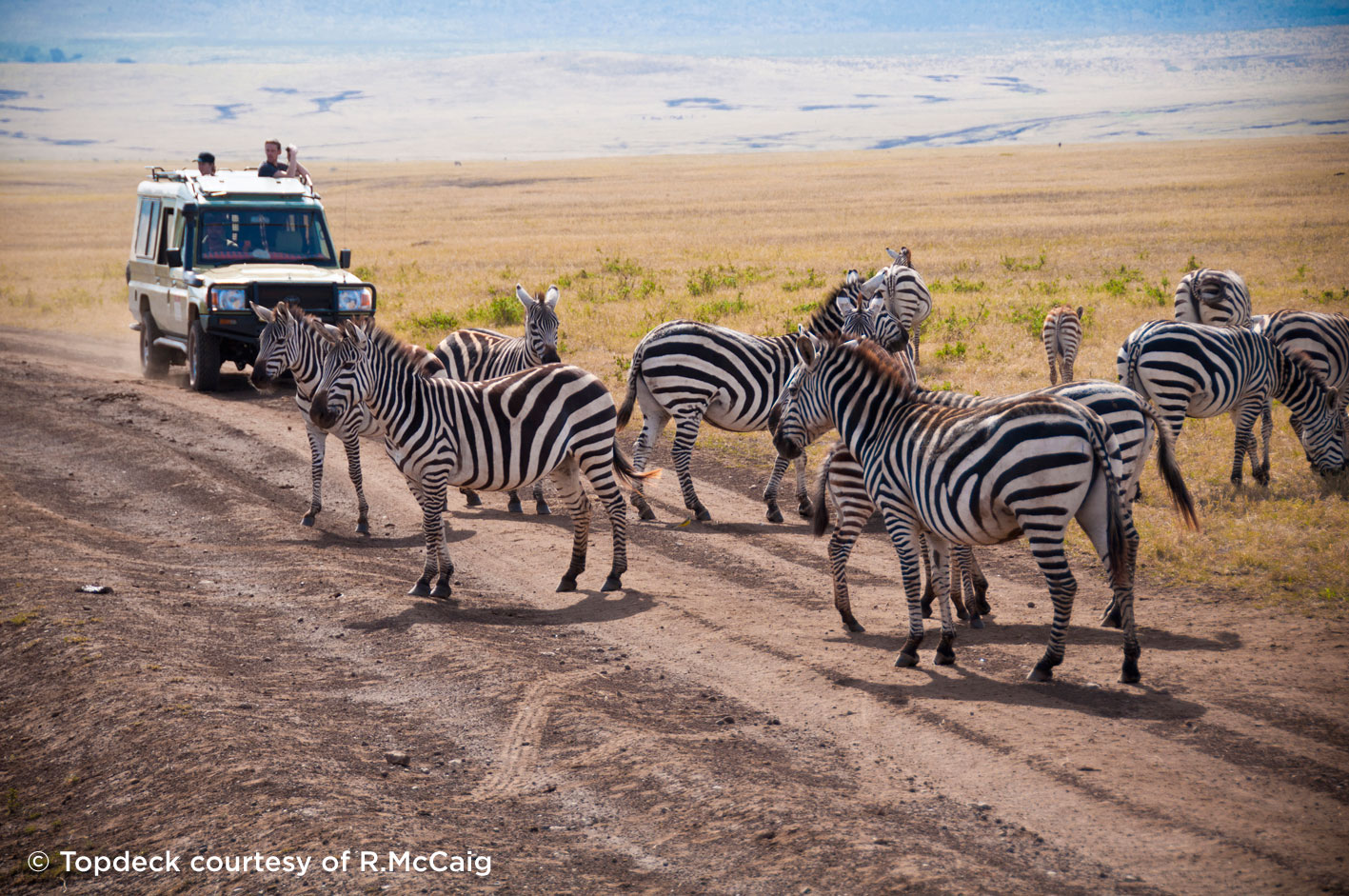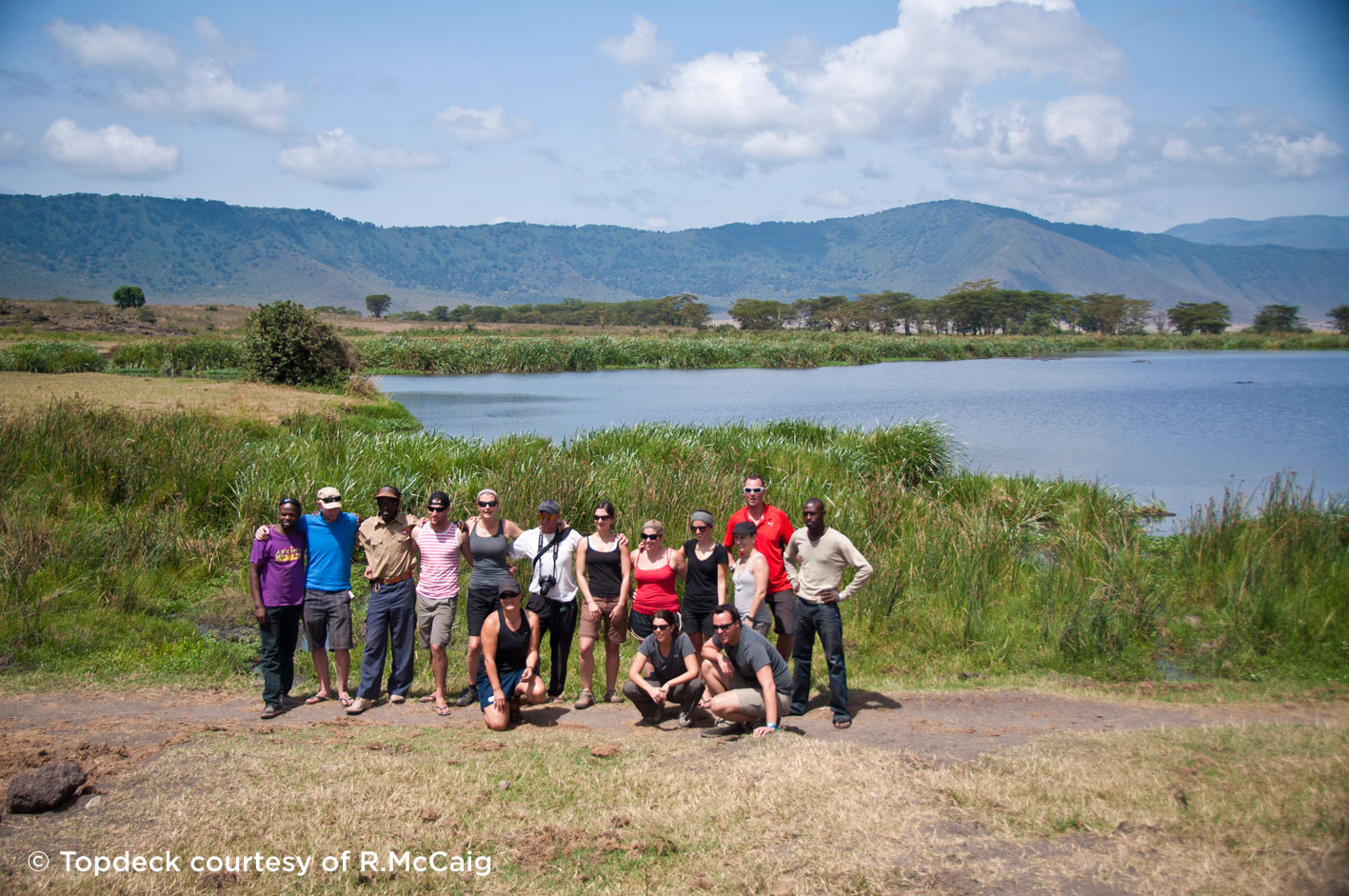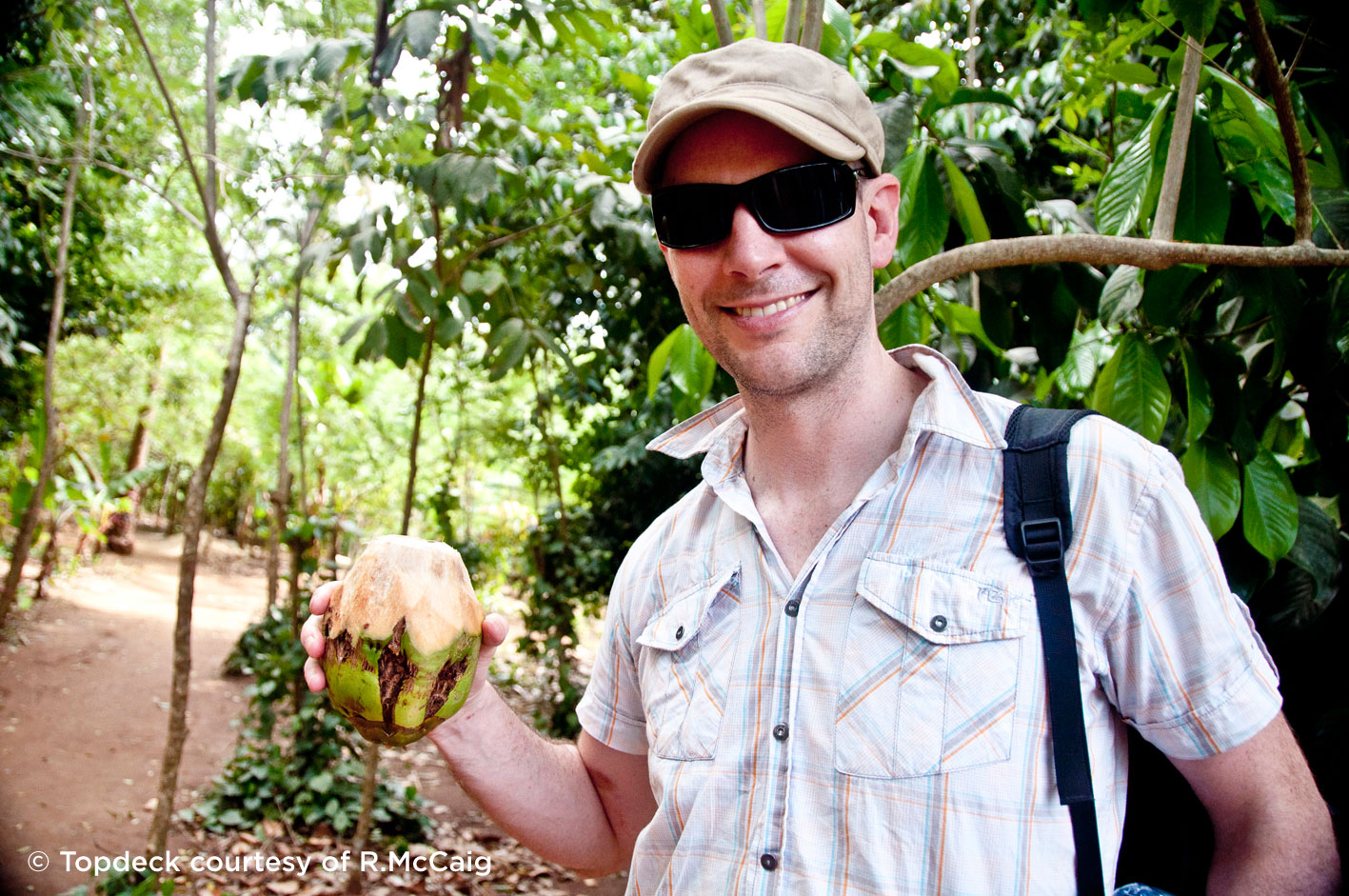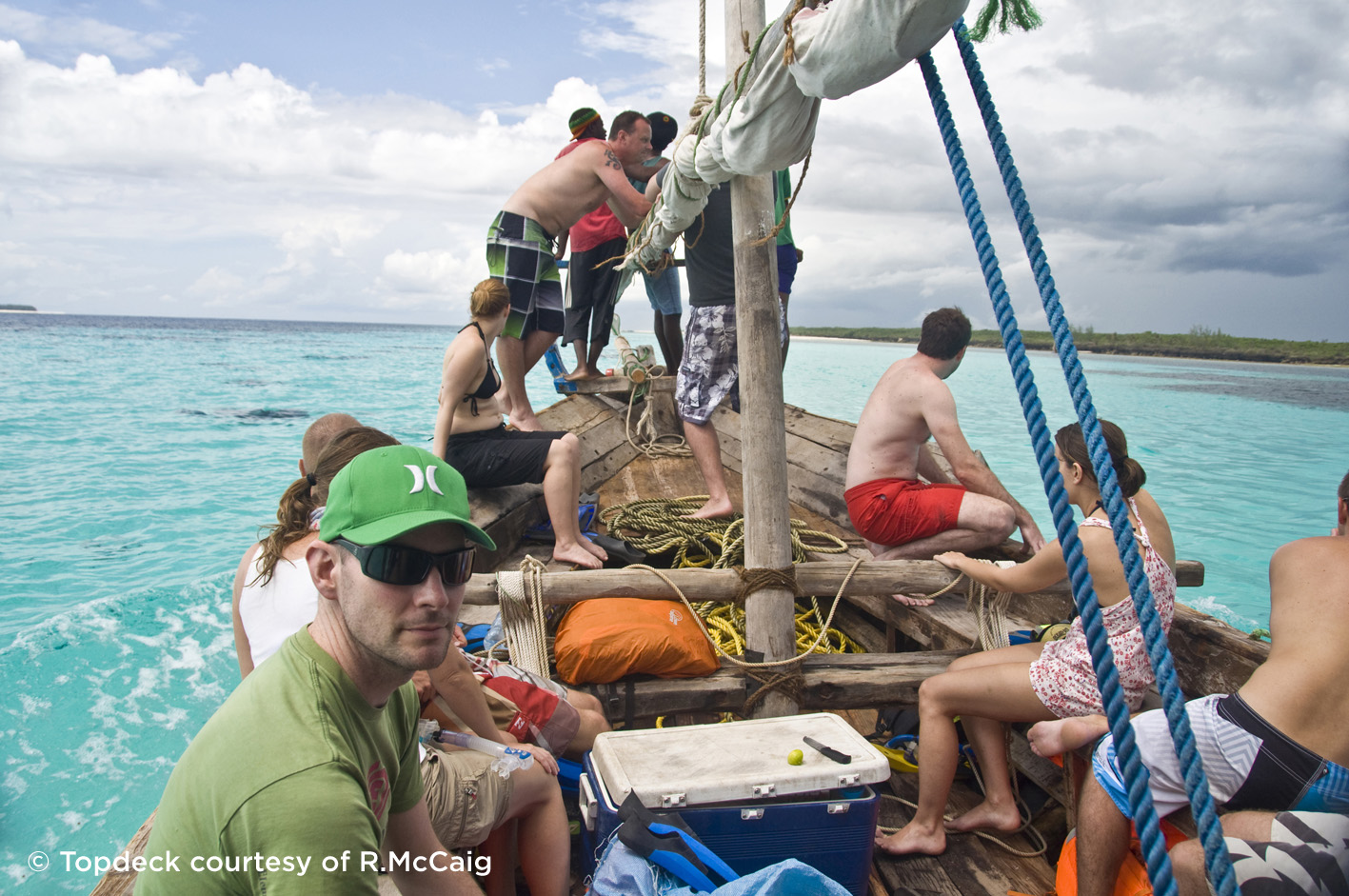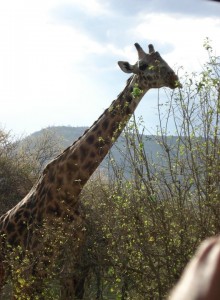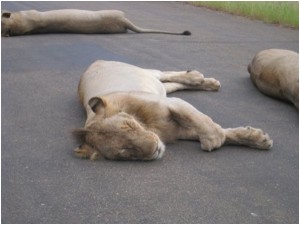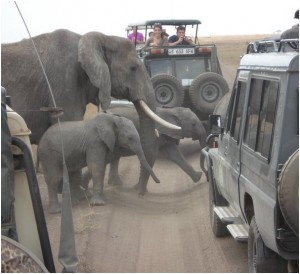Kenya & Tanzania:The Last Frontier of Travel
Thursday, June 7th, 2012Lifelong traveller (and Topdeck’s head designer) Bec shares her experiences of her African journey with Topdeck.
***
For me and many others on my trip, Africa is the last frontier in terms of travel.
My partner Brad and I have been through Europe, Asia, Australia, New Zealand, South and North America, so other than Antarctica we only had the wilds of Africa to cross-off.
We arrived on in Nairobi on Friday, but as the trip didn’t start until Sunday we had some time to kill.
With no plans and no idea what to do we contacted our Trip Leader Masivu for advice and he made some excellent suggestions.
First up we paid a visit to the Giraffe Centre followed by a trip to the David Sheldrick Elephant Orphanage. The giraffes at the centre are so beautiful and gentle. You get to feed them with these giant pellets. If you’re feeling keen, hold one between your teeth to receive your very own giraffe kiss!The best way to get around is by taxi and we had a great driver for our time in the city. He was really fun and gave us heaps of facts and information about Nairobi.
After meeting our group and Trip Leader on Saturday evening we were up bright and early the next morning for our road trip to the Maasai Mara.
Our group of 15 was split into two mini vans for the 4-5 hour drive. Distance-wise the Mara isn’t too far away, but thanks to rough road conditions the drive is rather slow.
With the stunning scenery of the Great Rift Valley all around and new trip mates to meet we were kept busy.
THE ANIMALS
That afternoon we pulled up at our home for the next two nights, a permanent campsite just outside the Maasai Mara.
With no fences around the site it’s not uncommon for animals to wander around the tents at night.
The tents at this site were more like canvas houses – they even had their own indoor toilets!
After dinner around the campfire we went out for a night drive of the Mara.
Elephants, giraffe, impalas - I couldn’t keep track of all the animals we saw! The best thing we encountered was a leopard sleeping in a tree right by the road.
Sunset in the Mara was simply awe-inspiring. It was everything you ever imaged from the Lion King and more.
Leaving Kenya behind, we made our way to a brand new destination – Tanzania and Serengeti National Park.
The experience of waking up in the vast open landscape of the Serengeti with no fences, just beautiful scenery is amazing.
While eating dinner at our campsite one night an elephant wandered in for a quick drink from our water tank. We went up to say ‘hi’, but he was a little shy.
THE PEOPLE
A short drive from the Maasai Mara we visited a traditional Maasai village.
We watched a performance of the traditional Adumu (jumping) dance and had a go ourselves.The villagers showed us inside their homes and we were able to buy jewellery made by the Maasai women.
While the Maasai live in conditions far removed from us Westerners, they place a high value on education and as a result nearly all the people in the village speak English.
Being able to speak to the locals isn’t something you often get to do so it really gave us an important insight into how they live and their culture.
The Maasai were as interested in us as we were in them. The women I spoke to wanted to know how many children we all had and they were rather surprised to find out none of the girls in our group were mothers. They were also interested in the lives of western women and how we all worked.
THE BEACH
Leaving the vast savannah behind, we spent the last two nights of our trip in a resort on the palm-fringed beaches of Kendwa Beach, Zanzibar.
It was the perfect way to finish our trip. Relaxed and chilled out, we spent our time snorkelling, swimming and sipping drinks at the bar.
For our final night together we took a sunset cruise. After spending 13 days together our whole group were really close so saying goodbye was hard.
It’s difficult to sum up just how incredible my time on safari was. Would I go back? In a heartbeat – there is still so much of Africa to explore!
THINGS TO BRING
- A South African adaptor to charge your gadgets on the truck.
- Wet wipes – at times you’ll get rather grubby!
- Plastic poncho – for those unexpected downpours.
- Binoculars – so you don’t miss out on the best wildlife spotting.
- A good camera – for lasting memories (also great for bragging).
Bec travelled on Topdeck’s 13 Day Kenya & Tanzania Adventure. For more images and inspiration check out Bec’s photo blog.
